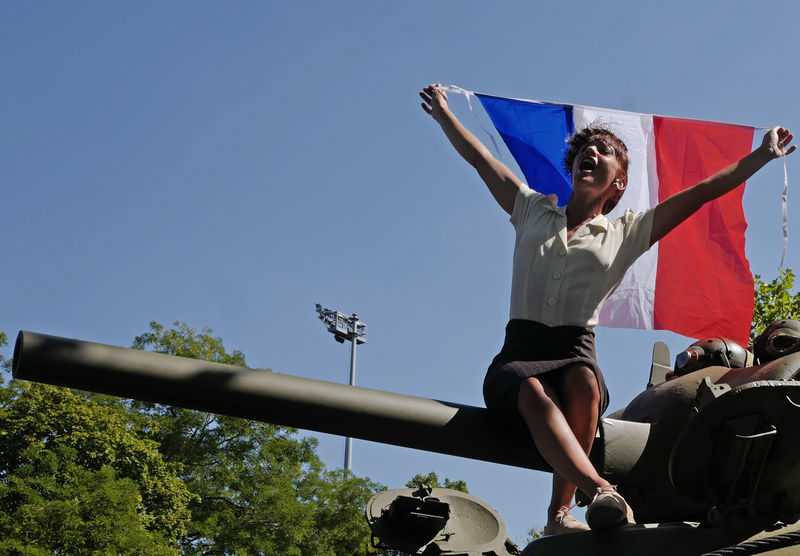Paris celebrates liberation from Nazis
27 August, 2019

Paris celebrated the American soldiers, French Resistance fighters and others who liberated the City of Light from Nazi occupation exactly 75 years ago on Sunday, unleashing an eruption of kissing, dancing, tears and gratitude.
Firefighters unfurled a huge French flag from the Eiffel Tower, recreating the moment when a French tricolor stitched together from sheets was hoisted atop the monument 75 years ago to replace the swastika flag that had flown for four years.
Dozens of World War II-era jeeps, armored vehicles, motorcycles and trucks and people dressed in wartime uniforms and dresses paraded through southern Paris, retracing the entry of French and U.S. tanks into the city on Aug. 25, 1944.
Among those watching the parade was Roger Acher, 96, one of the few surviving veterans, who entered Paris with Gen. Philippe Leclerc de Hauteclocque’s 2nd armored division around dawn that day. Fighting was fierce as they moved toward the city, he recalled. “I almost got killed.”
A Dixieland band standing on an army truck played at the end of the parade, which wrapped up at the site of a new museum about the liberation and the French Resistance.
Long the jewel of European cities, Paris suffered relatively little damage in World War II, but its citizens were humiliated, hungry and mistrustful after 50 months under the Nazis.
The liberation of Paris was both joyous and chaotic. It was faster and easier for the Allies than their protracted battle through Normandy and its gun-filled hedgerows. But the fight for the French capital killed nearly 5,000 people, including Parisian civilians, German troops and members of the French Resistance whose sabotage and attacks had prepared the city for the liberation.
After invading in 1940, the Nazi hierarchy ensconced themselves in Paris’ luxury hotels, and hobnobbed at theaters and fine restaurants.
Collaborationist militias kept order, and French police were complicit in the most dastardly act of the Occupation: the 1942 roundup of around 13,000 Jews at the Vel d’Hiv bicycle stadium before their eventual deportation to the Auschwitz death camp in German-occupied Poland.
The Parisians who weren’t deported or didn’t flee used ration tickets to eat, wooden soles on shoes to replace scarce leather and sometimes curtains for clothes. The black market thrived.
Source:
TAG(s):
